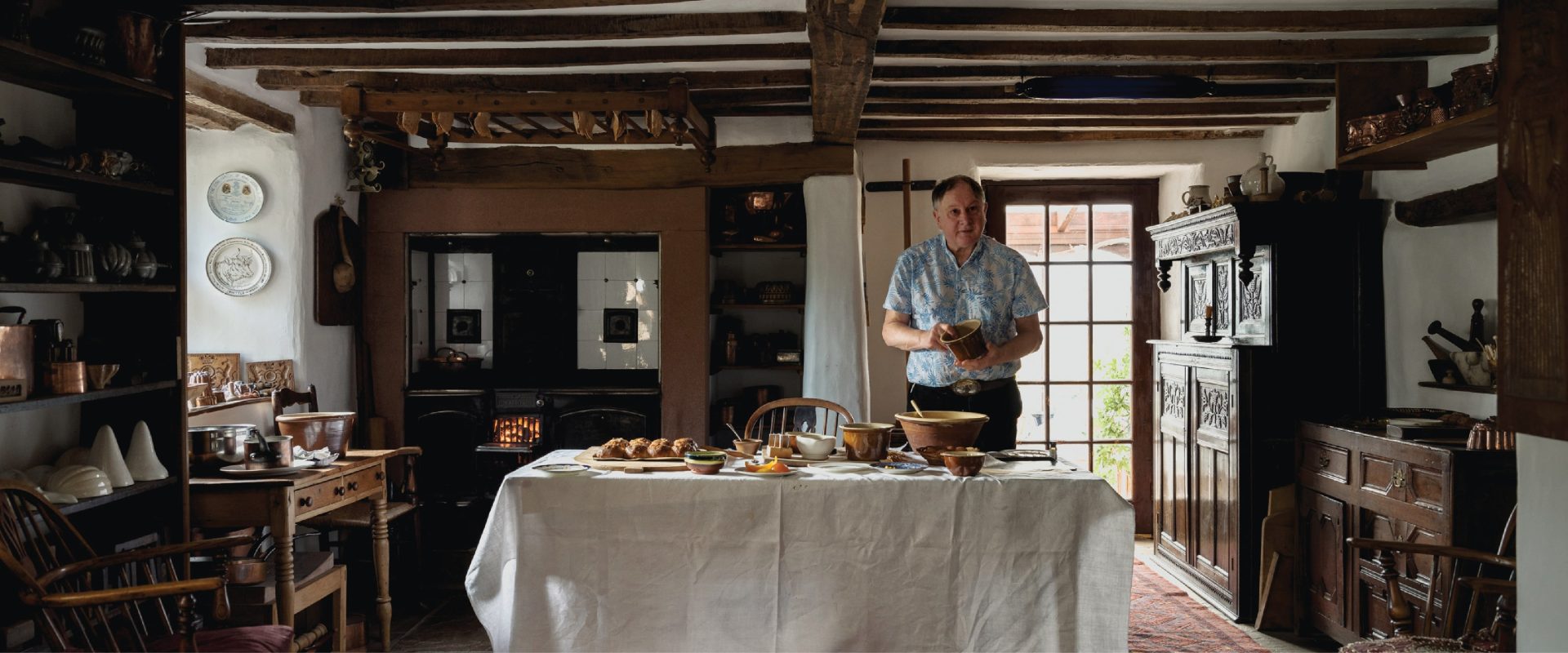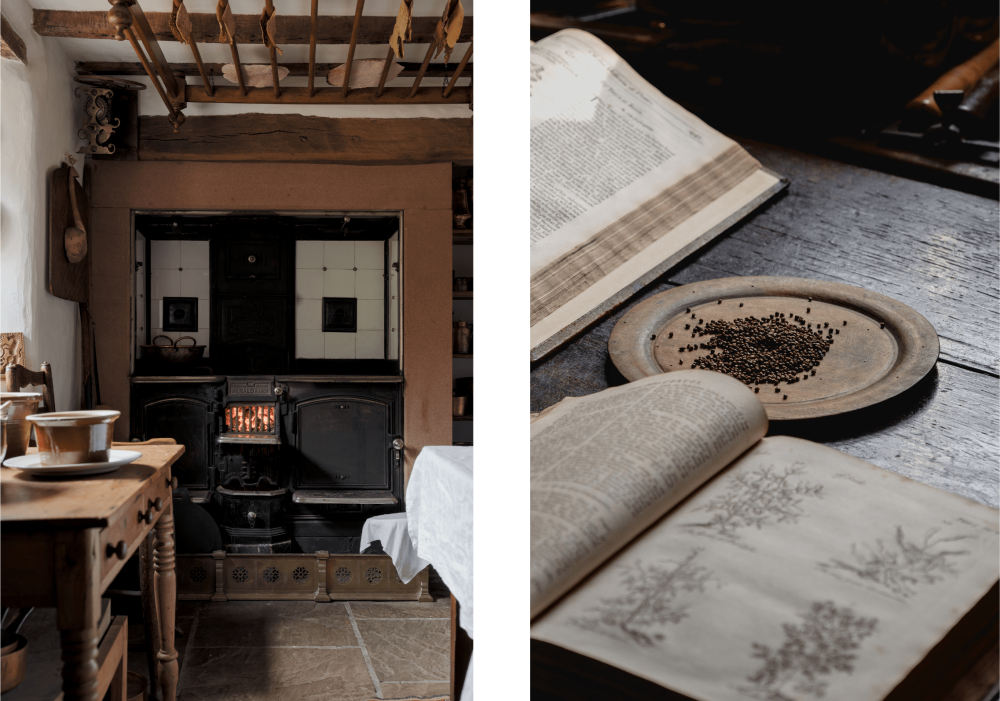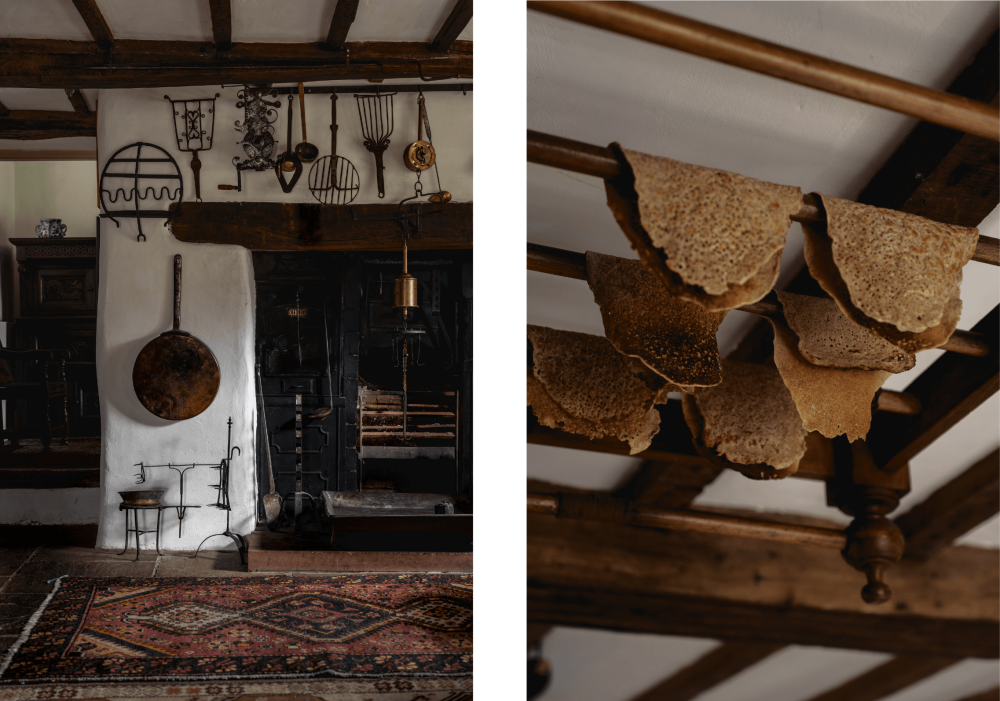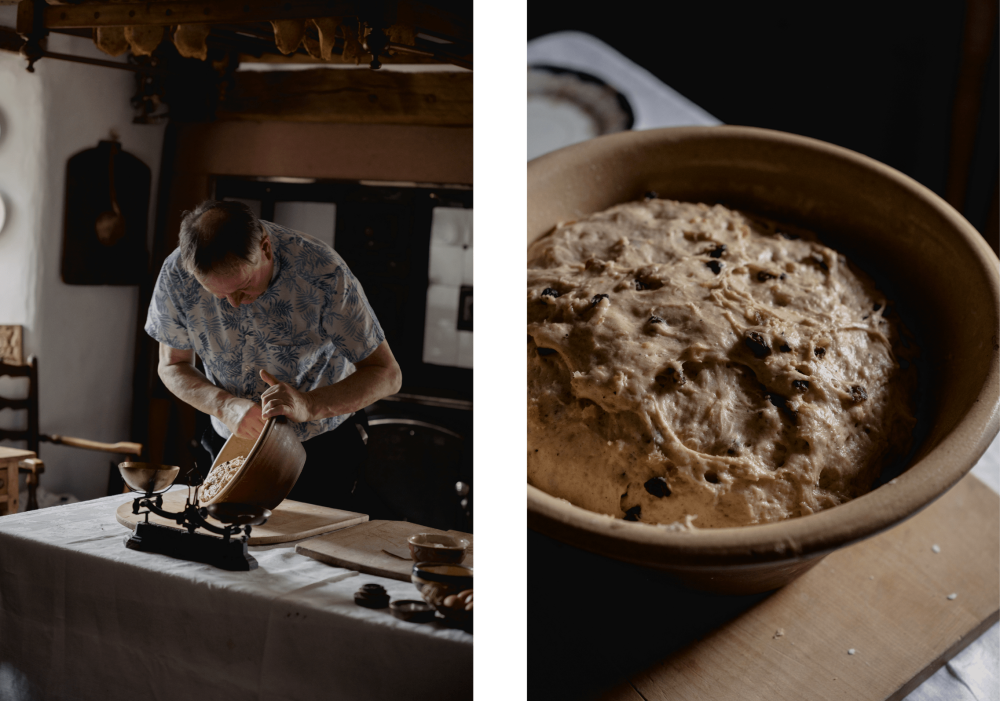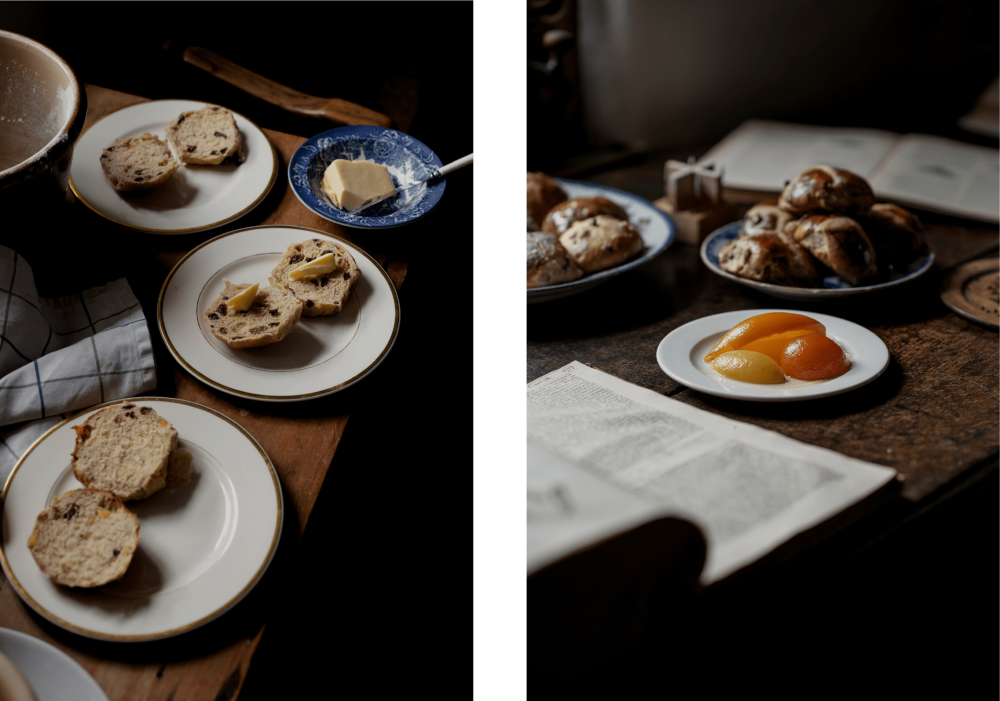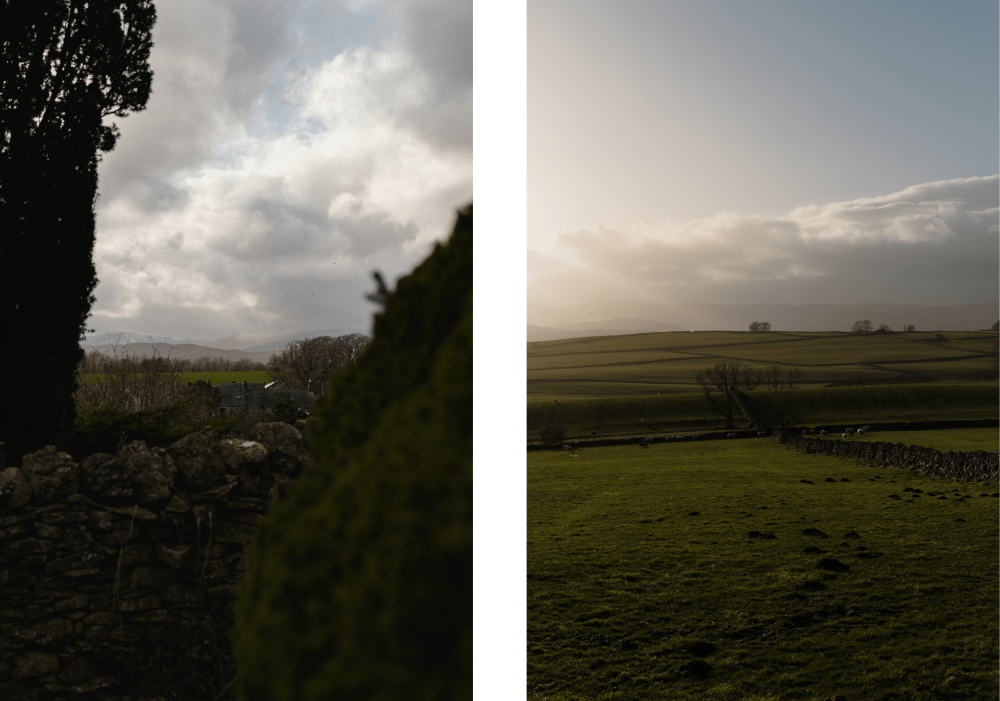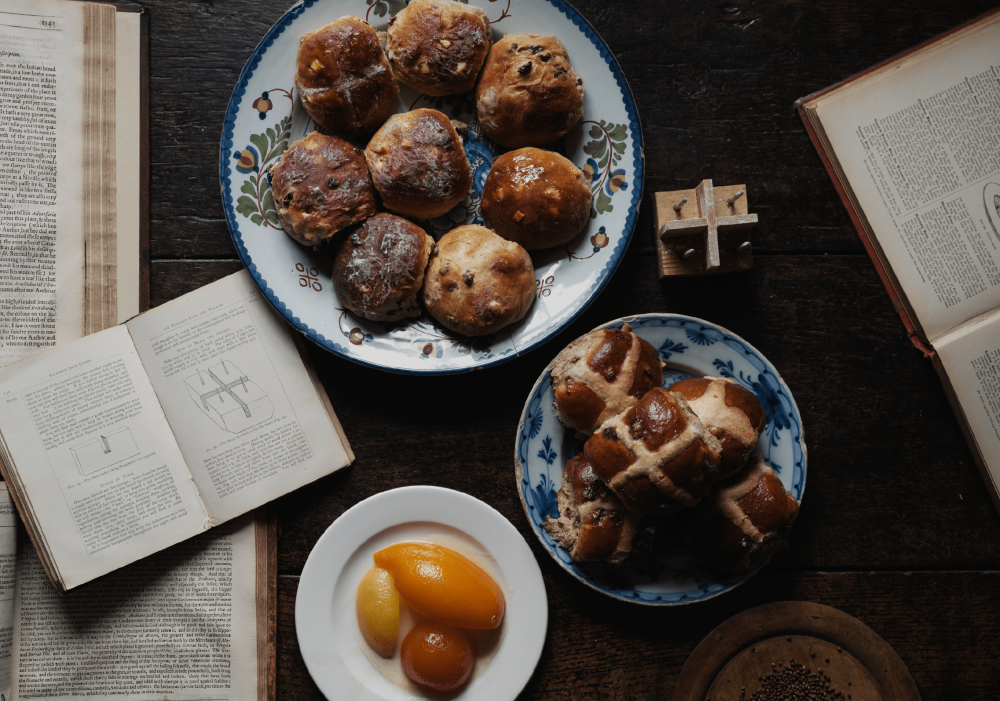Words Charlie Monaghan
Photography Elliot Sheppard
A trip to Cumbria to food scholar and cook Ivan Day’s kitchen reveals the history of a spring baking staple – the hot cross bun – as well as a glimpse into the ways they were once made
“This is probably the only house in Britain that you can do this in,” says food historian and cook Ivan Day as he exhibits a collection of books relating to hot cross buns and Easter baking that spans 400 hundred years of culinary publishing. He is jesting, but he is also telling the truth: there really is no other repository of such an extensive and rarefied collection of cooking books and equipment in the country. Pointing to an 19th-century cheese mould with the royal coat of arms and its accompanying elm wood vat, Day points out – on not the only occasion during our visit – that it is the only existing example of its kind.
To those interested in the history of British food, Ivan Day’s kitchen in Cumbria has become a pilgrimage. Over his decade-spanning career, Day has welcomed a vast array of folk seeking his expertise and practical demonstrations of forgotten culinary methods, from The National Trust to the TV crews of Time Team, Heston Blumenthal and Nigel Slater. Many more have come here for historic cooking lessons, which put to use the vast array of pie and ice cream moulds, mechanical spit-roasting gadgets and antique cookware Day has been collecting for over 60 years. Even more have read his books, Cooking in Europe 1650-1850 and Ice Cream: A History.
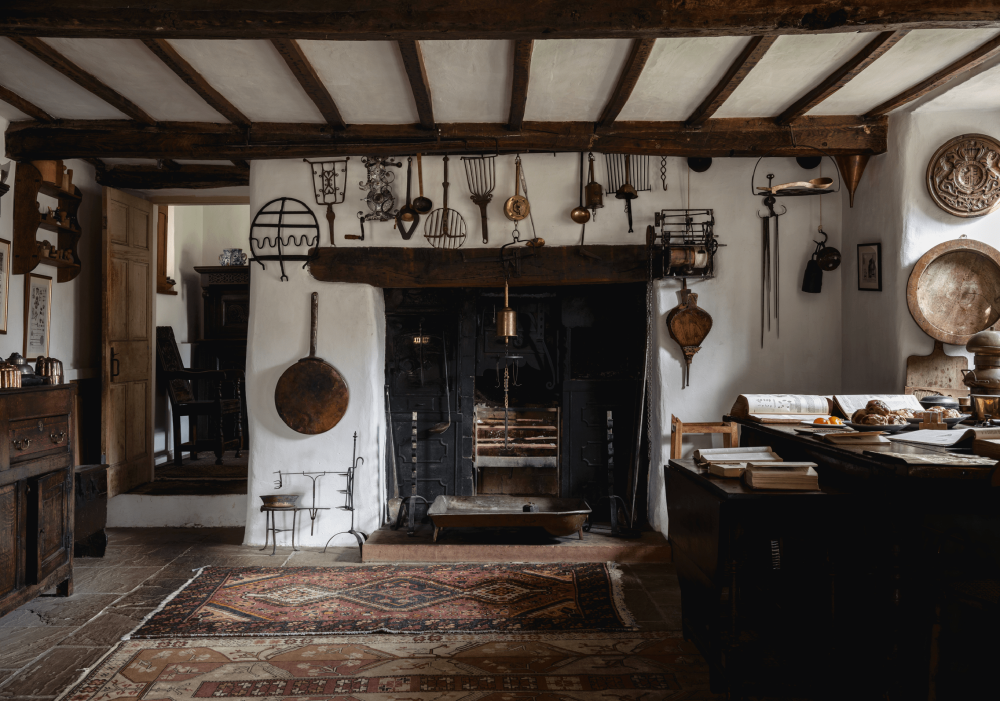
Pictured above: Day’s spacious kitchen takes up almost the entirety of the ground floor of his cottage. Each end has a 19th-century oven; one (pictured top) he uses for roasting meats with clockwork roasting mechanisms he has collected and restored, and one is favoured more for baking. A plate of grains of paradise sits next to an 18th-century book depicting the plant it grows from.
“This is probably the only house in Britain that you can do this in”
On our visit, Day, gregarious by nature, warmly welcomes us in from the cold, and we’re embraced by the heat of an 1850s range cooker blazing with coal. The scene is one Vermeer would have got his sketchbook out for: two tables, one covered with antique white linen, gently illuminated by a window to the left, on which is a mis en place of earthenware bowls and English delftware holding ingredients for hot cross buns. Within minutes of our arrival, it is clear why Day has become the expert on his subject, for not only is his knowledge seemingly limitless, but so too is his enthusiasm and generosity for sharing it.
After a run-through of each book he has displayed, he begins shaping some dough he has prepared, all while regaling us with miniature history lessons: “Ale barm, rather than sourdough, was the leavening for centuries in Britain and you had a right by law to get it from the brewery for free”; “Currants came from Corinth in Greece and were called Corinthaki, or little Conrinths”; “Seville oranges were the only type available in Europe until 1620, when the Portuguese bought sweet varieties from their Chinese colonies to Lisbon’s botanic gardens.”
Pictured above, from left: various implements for roasting meat hang around the oven. Above the roaring oven are Cumbrian oatcakes on a traditional drying rack.
We have made the journey from London to the Lake District to talk to Day about hot cross buns because so often the presence of them is felt too much like the arrival of spring itself: a sudden appearance, embraced warmly, and then, just as promptly, gone. This year, we wanted to savour the fleeting joys of hot cross buns by understanding more about them.
We have made some changes to our recipe recently. For years, we had a bun that everybody loved, and seemingly required no change. Then came along our master baker, Anomarel Ogen, who, having not grown up with them, began to prod around them in a way only a newcomer can: “Can we add wholegrains? Can we use sourdough starter? What other spices can we use? What about if we add more dried fruit?” Fixing things that aren’t broken is a tendency of bakers, but now our buns are better than they ever have been, with a depth of flavour derived from wholemeal, semolina and dark rye flours, as well as the peppery spice of grains of paradise, which is closely related to cardamon.
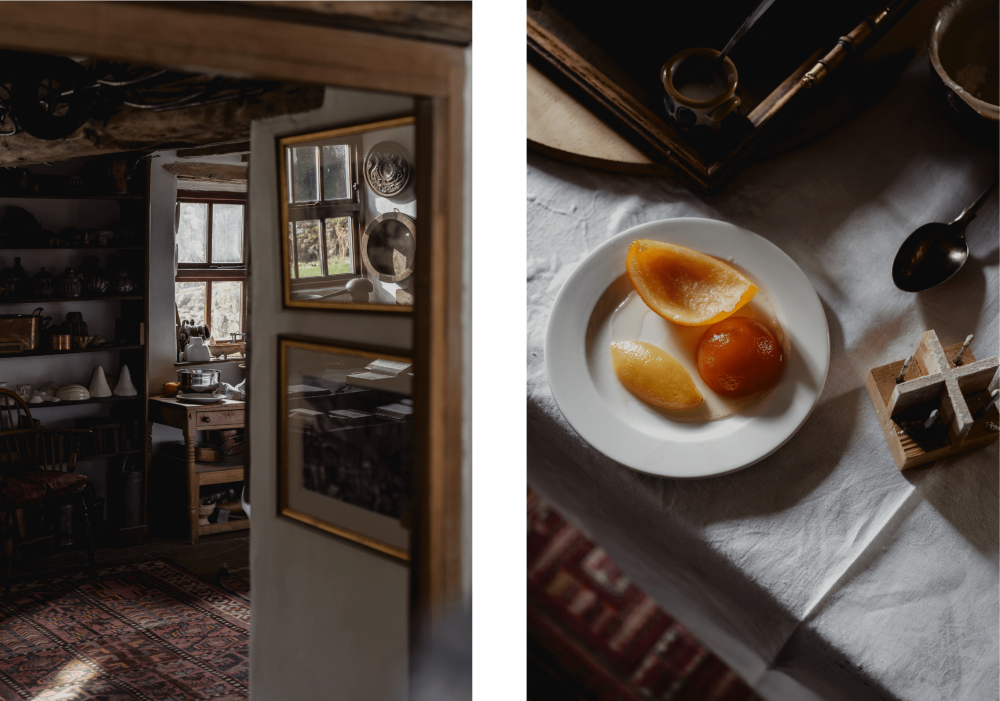
Pictured above, clockwise from top right: Preserved orange and lemon peel, which Day makes over the course of 12 days – “the sugar gets absorbed into the plant cells more slowly and the peel doesn’t go leathery,” he says. Day’s baking ephemera includes rolling pins, gingerbread moulds and sugar casts. Books relating to the spices and baking methods associated with hot cross buns span 400 hundred years of culinary history.
When we explain the use of this spice to Day, he becomes animated and begins sharing everything there is to know about its association with hot cross buns. “St Alban’s Cathedral,” he explains, “claim to have a recipe that includes grains of paradise dating from 1361, and that these ‘St Alban’ buns were handed out to the poor by a monk.”
Day is doubtful for several reasons. For one, most of the cookbooks from that period date from 1390 onwards, and none of them contain baking recipes – “You didn’t need them if you were a baker then, and, besides, you were illiterate anyway, so if the recipe does exist it is probably the most important in British culinary history,” he explains. Further suspicion is raised by the use of such an exotic and expensive spice in a bun supposedly given to ordinary people: “There are mentions of grains of paradise in those books, but they are all about cooking in a royal context,” he says. The first genuine historical source of hot cross buns as we know them is from an Almanac dating 1733, he tells us.
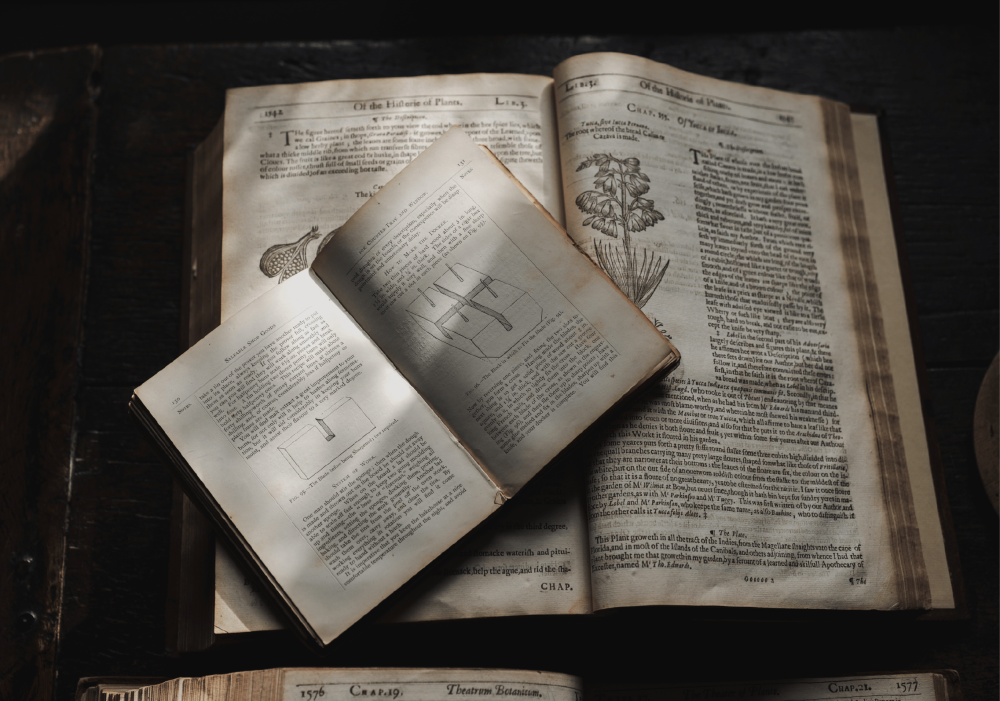
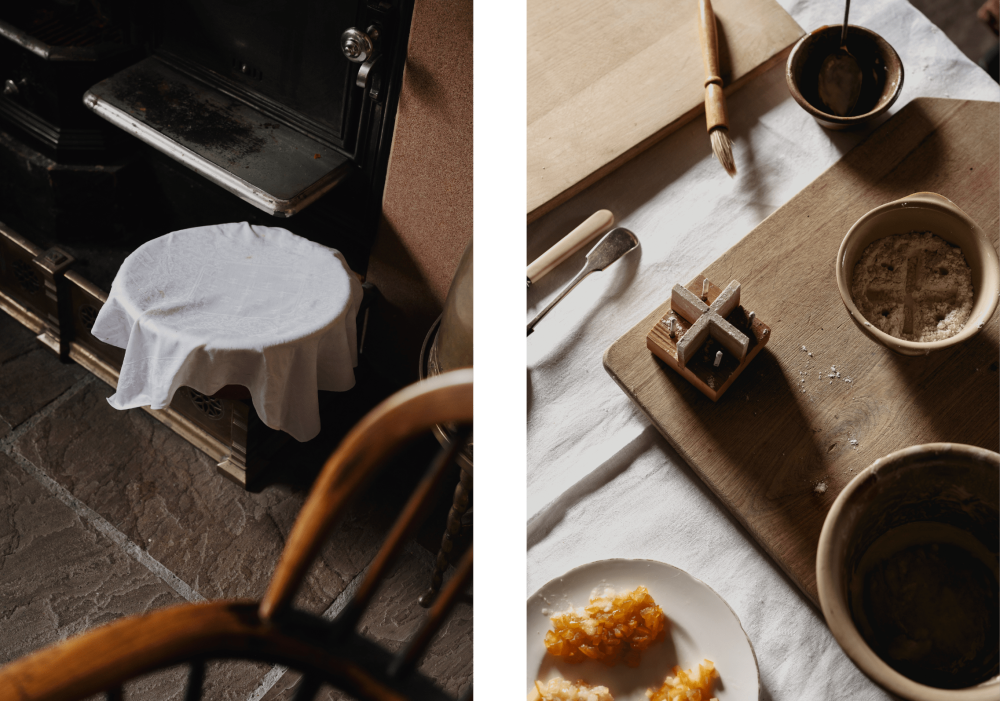
Pictured above, clockwise from top: “I discovered the bun docker in a book from the late 1890s, by Frederick Vine, an amazing baker with various shops in north London,” Day says. Day’s dough rises thanks to brewers’ years, or ale barm, and is helped along by the oven’s heat.
“I think food is the biggest subject in human history”
If the exact origin of a bun that nowadays can be bought year-round at the supermarket seems trivial, to Day it represents something bigger. “I think food is the biggest subject in human history, and yet it is very poorly researched because professional historians have tended to concentrate on constitutional, economic, and political history above all else. But food is important to all of us as not just something that nourishes us but from metaphysical and spiritual points of view too. Hot cross buns are a good example of this because they are tied to a religious festival in the calendar,” Day explains.
Even if, like Day, you are an atheist, engaging with the religious significance of the buns can tell you something about how we enjoy them now. “For millennia, the only time ordinary people ate bread that wasn’t made with just flour, water and yeast was on celebratory days. These cakes and buns were enriched with costly additions like spices, dried fruits, eggs, and butter, and access to such ingredients was limited for most until the 20th century,” explains Day. “With a secular society, people like them because they are delicious, and, even if they don’t carry sacred meaning anymore, these once-religious foods connect us to a sense of seasonality,” he says.
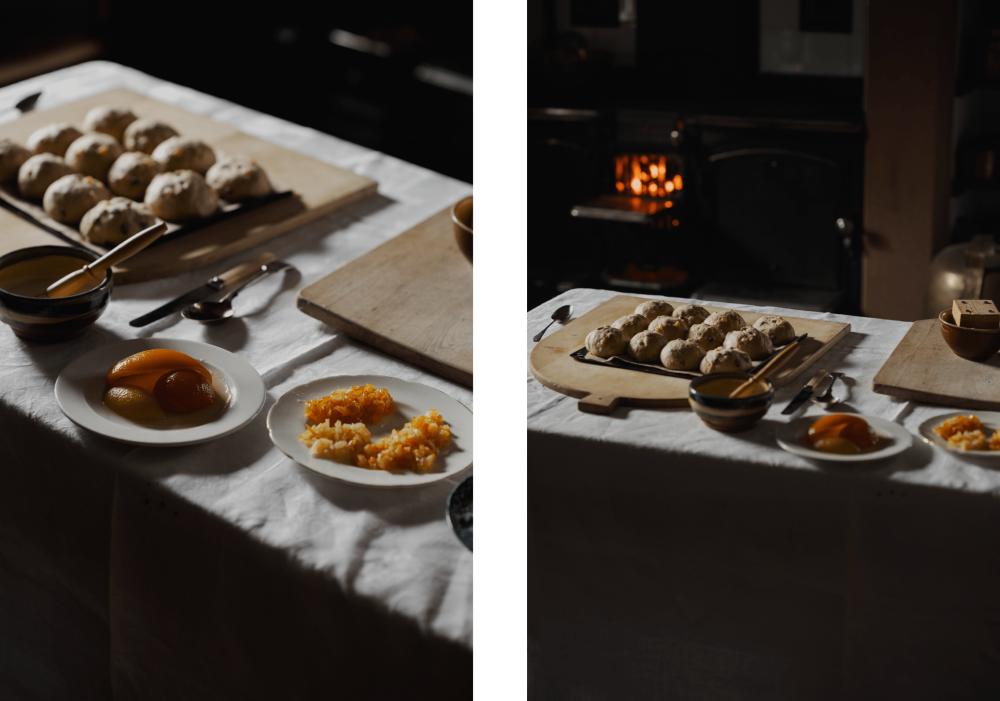
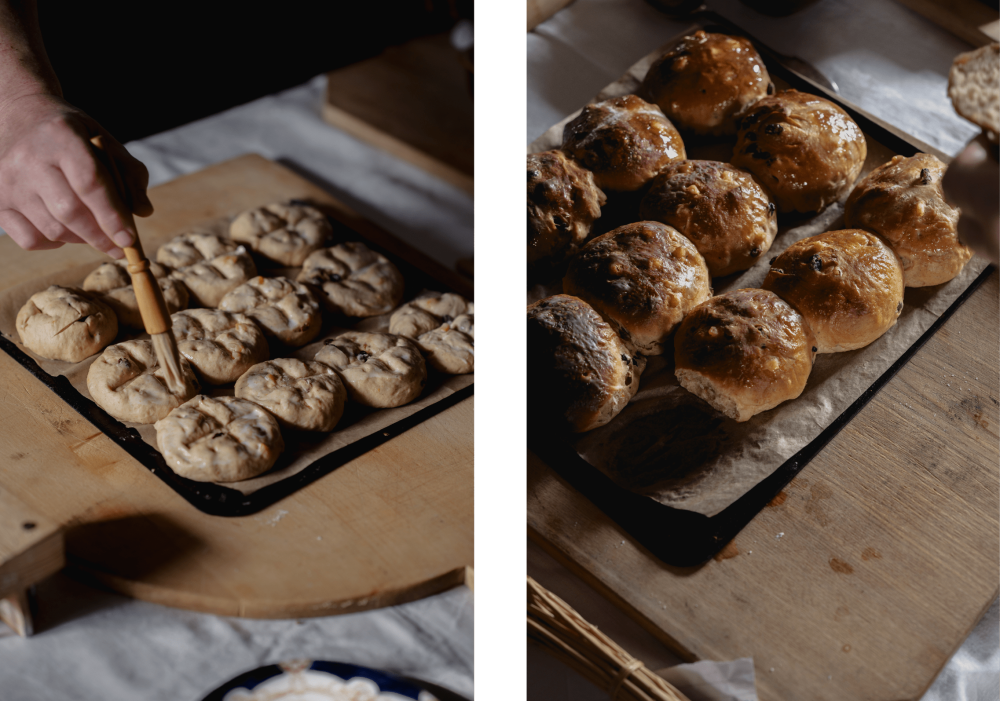
Pictured above: once risen, the buns are marked with the docker, which is studded with nails to release gas in the dough and prevent the docker from going in too far. Out of the oven, they are given a simple sugar syrup glaze.
As for the buns he is making today, Day explains he is taking us on a journey through history with his ingredients and methods. The use of grains of paradise harks back to the 14th century, even if he questions the veracity of the Alban bun claim. The ale barm starter references the leavening used in British baking during the medieval period. The spices, dried fruit and preserved peel, which Day makes himself, tell a story of the post-Crusades exploration of the Middle East. He discovered a description of the docker he uses to mark the buns in a book from the late 1890s.
While we wait with anticipation for the buns to bake, Day, never short on things to say, enthrals us with explanations that meander from the intricacies of how his oven distributes heat to why there are Cumbrian oat cakes drying on a rack above the oven (he read accounts of them keeping for a year and a half – his are currently a year old). We cover why he started collecting first books, then cookware (“I realised if you wanted to cook anything from old recipe books you need a lot of kit as well”); the history of his house, which was once used as a bakery; and when we get onto the subject of pies he leads us into a hallway dubbed ‘pie corner’ where there is a framed 18th-century recipe that include a monstrous number of birds, as well as Hogarth prints depicting pie scenes. The only subject Day shies away from when we bring it up is ice cream – “Another subject for another day” – but one senses this is only because of lack of time, not willingness.
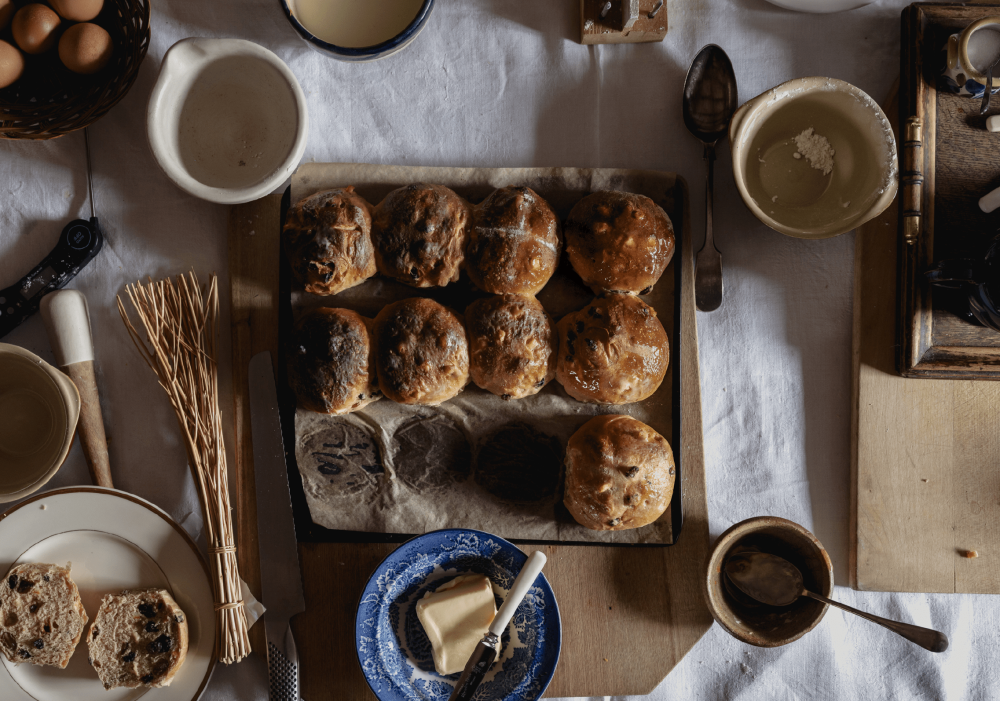

Pictured above: the missing three buns in the top picture hint at how tempting the buns were out of the oven, smelling of warm spice and citrus fruit. They went well with generous smears of butter and hot coffee.
“I realised if you wanted to cook anything from old recipe books you need a lot of kit as well”
When the buns emerge from the oven, Day expresses regret that the cross marks aren’t quite as clear as when he made them before. “I’ve gotten into very high hydration doughs, so it seems these have risen a bit too much to bear the impression of the cross,” he explains. But, if the history of the hot cross bun – imperfect and patchy as it is – can teach us anything, it’s that it’s not the buns themselves that are important, but the stories they carry. These buns, which bear the story of our delightful visit to this beautiful part of the world to spend time with a man whose passion is matched only by his desire to pass on his knowledge, are, to us, perfect in every way.
Pictured above: leaving Day’s cottage, the beauty of Cumbria was revealed by late-afternoon sunshine.
“One a penny, two a penny, hot cross buns!” Find our buns in bakeries now, but be quick; they will be gone soon…
